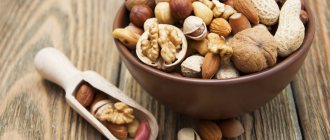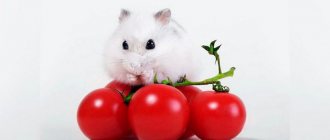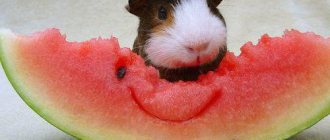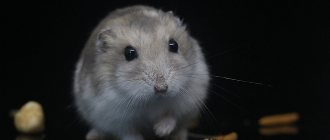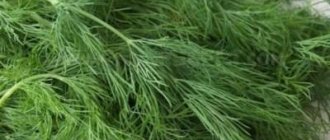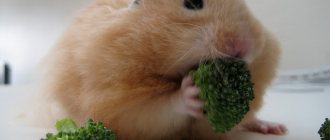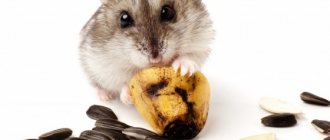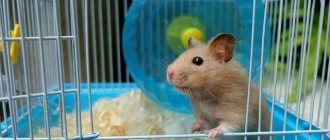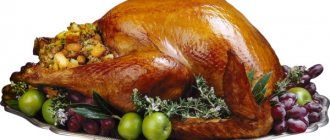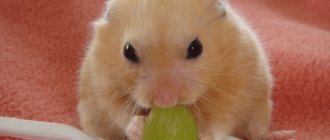Many people have long had the wrong idea about the relationship of rodents to cheese. A lot of information remains in our heads from watching cartoons. For example, "Tom and Jerry", where Jerry the mouse was constantly hunting for cheese. He always managed to outwit Tom the cat and get the coveted piece. This is one of the cartoons that sowed into our consciousness the wrong attitude of rodents towards cheese. In fact, even that same mouse treats cheese the same way it treats other products. What about our rodent? Can a hamster have cheese?
Cheese is not a product that can be given to a hamster often. Don't forget that it is fatty and salty. But your pet should not eat such foods. It also contains spices that a small body cannot digest. But why then do hamsters always eat it? The hamster himself does not know what is harmful to him and what is not. In the wild there is not such a variety of food as at home. There are no pickled cucumbers lying around there or dishes prepared according to recipes with the addition of various spices and salts. Therefore, this product is not recommended for animals. It is advisable that every pet owner knows what hamsters should not eat.
A hamster can have cheese if it is not salty and not a fatty type. Not often, maximum once a week, a small portion for dessert after the main diet. This product is recommended for pregnant rodents. If the female begins to eat her cubs, you need to give her foods rich in protein, including cheese. Hamsters also eat meat.
To give or not?
Can hamsters eat cheese?
To answer this question, you need to determine the fat content of the dairy treat. Like all animals, they need foods that contain a lot of protein from time to time. Rodents are allowed only low-fat cheeses. If this is the type of product you have, you can give your baby a piece that should not exceed the size of a sunflower seed. Such a small portion will benefit your pet.
Often, when choosing cheese for themselves, people give preference to varieties with various flavoring additives, spices and a high salt content. Such a composition will not only be harmful, but even dangerous for the animal. Therefore, you need to buy treats for your hamster separately.
This rule applies to all other products that make up the pet’s diet. By themselves, rodents are not able to distinguish healthy food from harmful food.
Should you give cheese to Djungarian hamsters?
This type of hamster is extremely susceptible to harmful environmental influences. For this reason, it is better not to give dairy treats to dzhungarikas. In addition, the animals have poor health; their small bodies react to any low-quality food.
Cheese and Syrian hamsters
No less popular among hamster breeders is the Syrian breed. You shouldn't treat this pet with cheese either. The salt and fats contained in the product can harm the fragile body of the animal. Only hard, unsalted, low-fat varieties are allowed in small doses. It is better to choose boiled chicken meat as a source of protein.
Is it possible to give Djungarian hamsters cheese?
It is worth mentioning separately about dzhungarikas, since they are the most popular species among domestic hamsters. Probably everyone has noticed the curiosity and appetites that are characteristic of the Djungarians. If he doesn’t eat, he takes a bite. But just like others, he should not be given a lot of cheese. You need to be careful in dosages so as not to cause harm. This product is harmful even to the Syrian hamster, which is the largest of the domestic hamsters.
Can hamsters be given cheese? Yes, just not salty and not fatty and with virtually no additional spices. Few people buy this variety for themselves, so most likely the cheese you have may not be suitable for a hamster.
Can hamsters eat grapes?
Hamsters can eat grapes, and they love this healthy fruit. Grapes are berries, but not citrus fruits, so they are completely safe for hamsters. However, if you are keeping diabetic dwarf hamsters, then this product is not suitable for regular feeding.
To make sure grapes are safe for hamsters, you can crush them and see if they have seeds, or, as a last resort, remove them yourself. Grape seeds can pose a choking hazard to hamsters and should always be removed first. And as previously mentioned, dwarf hamster species should not be fed large amounts of sugary foods, and grapes contain a lot of sugar.
What grapes do hamsters prefer? There is no evidence that hamsters prefer green or red grapes, so it comes down to personal preference. You can feed your hamster grapes every few days, and they certainly shouldn't be the main staple of his diet. Eating too many fruits and vegetables, which contain fiber, can cause stomach upset and diarrhea.
Also be careful - hamsters love to hoard food and store it. So use fresh food sparingly and check every few days that your hamster has eaten all of his food.
Milk
Milk is the first food of every mammal's baby. It contains all the necessary components for the child to grow and develop properly. Hamsters also drink their mother's milk from birth until they switch to feeding on their own and there is no need for mother's milk. Under natural conditions, a rodent consumes milk only from its mother, while adults do not consume it and remarkably replenish the need for fluid in the body with ordinary water.
Can hamsters have milk? Since this is an unnatural product for an adult animal, it is not worth offering it.
You can give milk to hamsters in several cases:
- The female who gave birth died, and her newborn babies are not able to feed on their own;
- A pregnant or lactating female is weakened and needs additional feeding;
- The hamster is weakened due to a serious illness and can only eat liquid food.
What kind of milk can be given to hamsters?
If you decide to offer your pet this product, then pay attention to the following points:
- Milk should be low-fat, it is best to use a product with a fat content of no more than 1.5% fat;
- Choose cow's milk over goat's milk, as goat's milk is much fattier;
- Be sure to boil the milk and cool before feeding;
- Use dissolved milk powder, it is easier for rodents to digest;
- Before feeding milk for the first time, be sure to consult your veterinarian.
Milk in small quantities
As they say, everything is possible in moderation. If you really want to treat your little friend with milk, then it’s better to moisten a piece of stale bread and feed it to him. The product should be low-fat, no more than one and a half percent. It should not be given daily, but it is better to pamper the hamster with milk on major holidays. However, its quantity should be minimal.
Many hamster owners say that before treating their rodent with this product, they should boil the milk to protect their pet from indigestion.
If you have a pregnant or lactating female hamster, you can give her small portions of milk every other day to support her body. You should stop feeding your hamster as soon as you remove the babies from her.
Which varieties are prohibited?
Can hamsters eat cheese with a high content of fat, salt and seasonings? According to experts, such products are contraindicated for pets due to the development of diseases of the cardiovascular, renal and digestive systems. All this negatively affects the general condition of the domestic rodent and can provoke its death.
Processed cheeses
When asked whether a hamster can have this type of cheese, experienced livestock breeders answer that it is not possible. Because it contains fatty foods - cream, butter and milk. It is made on the basis of hard cheeses. Therefore, the fat content of the finished product is very high.
Moreover, some unscrupulous manufacturers add cheap vegetable substitutes, such as palm oil, instead of natural vegetable oils. And to improve the taste of such products, various flavors, seasonings and other additives are added.
Sausage cheese is a type of processed product. Its excellent taste and aroma is also achieved through various additives that are harmful to the health of the rodent.
Sweet processed cheese contains increased amounts of sugar, cocoa, and various sweeteners. They can cause the development of diabetes in a hamster, as well as many other diseases of the cardiovascular system.
Therefore, when asked whether it is possible to feed hamsters processed cheese, experts give an unequivocal answer - No!
Product with mold
This delicacy appeared in our country relatively recently, but is already very popular and in demand. Is it possible to give a hamster blue cheese? Of course not! Excessive consumption of moldy dairy products can provoke the development of dysbacteriosis and flatulence. The digestive tract will also suffer from such food. Therefore, you should not risk the health of your pet.
Even people are recommended to consume this product in limited quantities.
Content Features
Almost all people want to have a beloved pet at home, but in the modern rhythm of life it is difficult to find time to care for cats or dogs, so many people prefer to cage a small, unpretentious, fluffy hamster. Rodents really don’t need much human attention and care, which is why they have become so popular for keeping at home.
Many people believe that for good growth and good health you need to drink a lot of milk and eat dairy products. This is true, but when the conversation turns to hamsters, you can argue. Is it possible to feed hamsters cheese and other dairy products? This question constantly worries rodent owners.
Hamsters are mammals, and this suggests that such products will not harm them. When answering the question whether it is possible to give a hamster cheese and milk, you need to understand the little things, and only then draw conclusions.
Is it possible to give hamsters the same food in winter and summer?
The diet of animals is quite varied. It includes: grains, nuts, fruits and vegetables, protein products. Vegetables and fruits have a seasonal cycle. In the middle zone, cucumbers and plums grow in summer. At this time they contain a lot of vitamins. There will be no benefit from plums for the New Year. It was either grown somewhere far away, or treated with chemicals that protect against spoilage. This product should not be given to an animal. As for watermelons, it is better to exclude them from the diet altogether. They contain a lot of water, and nitrates added during cultivation are perfectly soluble in it.
It is better to prepare fruits in season. To do this, dry apricots and pears, and then add them to your pet. Instead of greenhouse cucumbers, feed the animals carrots and turnips, which retain vitamins well; apples can be given as fruit.
How to introduce it into the diet
How often can you give cheese to a hamster, in what portions and in general, when and how to start feeding this controversial product so that the baby only benefits from it, we will consider below.
Since protein food does not form the basis of the diet of wild rodents, there is no need to add it to the diet too often. Two or three times a week will be enough. Set aside special “protein” days (Monday and Friday or others, as convenient for you). This must be done so as not to get confused and not harm the pet with excessive amounts of treats. On one of these days, you can treat your furry friend to a piece of cheese.
You should start feeding the animal a new product carefully - first give half the portion, then evaluate the reaction of the baby’s body. If all is well, you can continue introducing the product into your diet.
The age of the rodent that first tried this delicacy should not be less than 6 months.
How to give correctly
In addition to choosing the right type of cheese, there are other restrictions for treating your domestic hamster with this fermented milk product.
Did you know? The technology of making cheese has been known to mankind for more than 10 thousand years, but it was apparently discovered completely by accident. It is assumed that our ancestors stored milk in bags made from animal stomachs, and it was there that “noble” fermentation took place under the influence of special rennet enzymes.
We list the main ones:
- You can only include dangerous delicacies in the diet of completely adult rodents whose gastrointestinal tract is already fully formed. The minimum age that an animal must reach before receiving a treat that is questionable from the point of view of its benefits is 6 months.
- You should start introducing the product into the rodent’s diet gradually, literally with a few crumbs, carefully observing the reaction. No other new baits should be present in the animal’s diet. At the slightest sign of diarrhea, bloating, poor health, loss of appetite or other manifestations of negative consequences of taking the treat, the experiment should be stopped once and for all.
- For medium-sized hamsters, the permissible portion of the “delicacy” (with a normal reaction to the product) can be approximately the size of a bean; for dwarf hamsters and other dwarf species - even less.
- You should not spoil your hamster with a dangerous product too often. It is better to do this occasionally, replacing the protein component in the food with fermented milk treats. At the same time, 2–3 “protein” days per week are enough for the animal’s normal development, but there should not be more than one “cheese” day per month.
How to give your hamster cheese
Cheese should be introduced into an animal's diet with caution. It is best to create a schedule for feeding your pet this treat.
Determine two or three protein days, but not more often. Thanks to the table, you will not forget when you gave your hamster a treat.
For the safety of the animal, for the first time you can give a portion equal to half a sunflower grain. This should be done in the morning in order to observe the hamster’s reaction to the new product throughout the day.
If everything went well, you can periodically treat your pet with cheese, gradually increasing the piece to the size of a whole sunflower grain.
Of course, cheese is a valuable source of protein and animal fats for humans. But for small pet rodents, large amounts of this milky treat can be disastrous. Remember that you are responsible for the animal you tamed
Be extremely careful about the presence of harmful products in your hamster’s menu.
The best cheese for complementary feeding
Based on all of the above, you can decide whether a hamster can eat a particular type of cheese using the following indicators:
- Fat percentage. The lower it is, the better;
- The amount of salt in the composition. Also, less is more useful;
- Protein. Here it’s the other way around – a large percentage is welcome;
- Unnatural ingredients, palm oil, etc. Ideally, there should be none at all;
- Spices. It's better to do without them.
The listed properties are possessed by durum varieties with reduced fat content. This type of treat will be the safest addition to your pet’s diet. We also recommend that you familiarize yourself with the rules for feeding hamsters with dairy products.
Features of feeding
We have already figured out that hamsters eat cheese and this product is not contraindicated for them. Now, let's find out how often and in what portions he eats such food.
Since such a product does not form the basis of a pet rodent’s diet, there is no need to give it too often. 2-3 times a week is enough. To avoid getting confused yourself, mark protein days on the calendar, for example, Monday and Wednesday. This way you can avoid problems with oversaturation of a small organism with such food.
At what age can you give cheese to a hamster? So, the age of a hamster that can try such a treat for the first time should not be less than six months.
Other dairy products
We wrote about the possibility of giving a rodent milk and found out whether hamsters can have cheese. As for other products made from milk, let's look at them.
Kefir and yogurt with the lowest fat content can be given to a hamster in the same way as milk. The norm is literally a drop, equal to approximately one square centimeter, once every three to four days, or better yet, once every two weeks.
Every day, a hamster needs to get protein from its food; a large amount of it is found in cottage cheese. This product should have no more than 2% fat content, and it can end up on a rodent’s plate once a week, also in very small quantities.
From protein products, you can give a little boiled egg, a piece of chicken breast, cooked without salt and seasonings. Oat sprouts and mung bean are an ideal protein product for rodents.
How much do pet hamsters eat?
Your pet is a nocturnal animal, you need to remember this. During the day he sleeps, and at night he eats, plays, exercises on a “simulator,” stores supplies, and sharpens his teeth. Therefore, the best option is to feed the baby twice a day. In the evening - the main meal, a hearty breakfast. In the morning, before bed, have a light dinner.
The amount of food that should be given to an animal at one time depends on the type and size of the rodent. When feeding twice a day, the Syrian is given one tablespoon of the feed mixture, and the Djungarian is given one teaspoon. Campbell's hamsters and other dwarf species feed similarly.
He will hide all the food that the hamster does not eat at one time in the pantry “for a rainy day.” Periodically review these supplies and remove perishable foods so that the animal does not get poisoned. Be sure to put something fresh in place of the “seized valuables”. Otherwise, the baby may become seriously stressed because all his reserves have disappeared, and he will die of hunger in the long, cold winter.
Dairy products in a hamster's diet
Newborn rodents initially feed only on their mother's milk, since it contains all the essential components for full growth and development. Usually the female feeds the offspring until one month of age, after which the cubs switch to regular food.
Store-bought and fresh milk
Adults do not need milk. To replenish fluid reserves in the body, ordinary water is enough for them. In addition, this product (especially with a high percentage of fat content) often leads to digestive upset or the development of allergic reactions.
Giving milk is only allowed:
- Sick hamsters who can only eat liquid food (after a veterinarian's prescription).
- Pregnant and lactating females.
In both cases, you should choose not goat's milk, but cow's milk with a fat content of no more than 1.5%. Before use, the product must be thoroughly boiled and cooled.
Dairy products
A rodent can only consume fermented milk products that do not contain chemical additives. Otherwise, such nutrition will negatively affect not only the hamster’s digestive tract, but also its urinary and cardiovascular systems.
Cottage cheese is a protein product, it is quickly absorbed by the body, therefore it is safe for the animal. However, such complementary foods are introduced in small portions and no more than twice a month. Cottage cheese must be low-fat, this will help avoid unnecessary stress on the hamster’s gastrointestinal tract.
Yoghurts contain a large amount of fat and flavor enhancers, so they are very dangerous for the health of the rodent. This product should only be given if it is prepared at home and from natural ingredients. Yogurt can be made even tastier by adding small pieces of fruit (for example, apples).
What is good for a hamster
Fermented milk products, including cheese, are known to be a source of easily digestible protein, high-quality animal fat, and calcium, and in terms of the amount of these ingredients, cheeses are significantly superior to the milk from which they are produced.
Important! The human body is able to absorb 99% of the nutrients contained in cheese. As for hamsters, for them this proportion is an order of magnitude lower.
Natural cheese, in addition, contains components necessary for any animal organism, such as:
- vitamins - retinol and beta-carotene, thiamine, riboflavin, choline, pyridoxine, folic, nicotinic, pantothenic and ascorbic acids, cobalamin, tocopherol, calciferol (vitamin D), phylloquinone, niacin;
- minerals - potassium, phosphorus, magnesium, sulfur, iron;
- essential and essential amino acids - arginine, leucine, phenylalanine, tryptophan, proline, etc.
Despite its rich chemical composition, cheese is not a healthy food for a hamster.
However, in addition to simply listing the valuable nutrients that make up a particular product, it is always necessary to take into account such an indicator as digestibility. Since humans and rodents belong to different orders of mammals (predators and herbivores), they are accustomed to obtaining the same nutrients from fundamentally different foods.
Also learn how to distinguish Syrian hamsters by gender.
To be fair, it should be noted that a small percentage of protein products should still be present in the diet of rodents. In nature, these animals satisfy the need for nutritious and high-calorie food by eating various small insects. At home, this position can be “closed” by purchasing dried gammarus in a specialized store (a type of simple crustacean that fish and amphibians happily eat, but they are also suitable for rodents). A healthy and safe alternative is a small piece of boiled white chicken meat or half a boiled quail egg.
Why do we need cheese?
Procuring food for themselves, these rodents eat insects, as well as various worms and larvae, this is the source of protein for them when living in the wild. In order to compensate for the lack of protein food, it is recommended that pets add special food to their diet. It could be a bloodworm, mealworm or gammarus.
But it is worth noting that domestic rodents are not always happy to eat such food, in which case the owners try to diversify the pet’s diet with food from the table, but this is not always correct and can result in disastrous consequences for the pet, health problems, and sometimes even death . To understand whether cheese can be given to rodents, you need to understand the composition and benefits of this product.
Harmful or beneficial?
Surely, many people know that the main ingredient for making cheese is milk, but this is far from the only ingredient. Sourdough and rennet are added, as well as auxiliary ingredients, including salt, spices and much more.
Unfortunately, recently, manufacturers of this product have begun to use insufficiently good components, as a result, the quality of the cheese has decreased. Many cheeses contain products that can be harmful not only to rodents, but also to humans. The baby’s body will most likely react to an inappropriate product with indigestion.
If you are confident in the high quality of the product, you can safely offer it to your hamster.
It should be low-fat cheese. A small portion will only do you good.
Cheese fills the animal’s body with the following components:
- Protein.
- Amino acids.
- Vitamins.
- Microelements.
If you notice that your pet enjoys eating cheese, then you need to choose a quality product for him.
Which product is contraindicated?
You need to understand that many types of cheeses are very fatty. They may contain salt, seasonings and flavorings. These components are added to make the product more tasty and attractive to the consumer. This type of food is strictly contraindicated for animals.
Such food can lead to disruption of internal organs. You will be able to see for yourself that the rodent will become less active and lethargic.
Harmful and beneficial components of cheese for Djungarian hamsters
Domestic rodents are not able to separate food into harmful and healthy. When compiling a diet, you should not rely on the natural instinct of the Dzungarians - they will eat everything that is offered to them.
The owner’s task is not to harm the health of the pet and carefully weigh the benefits and harms of the product offered to the rodent.
For normal growth and development, dwarfs need protein food. In nature, hamsters get it by eating small insects, caterpillars, butterflies, and larvae.
One source of protein is cheese. A quality product contains:
- Protein – which helps build muscle mass,
- Amino acids – taking part in metabolic processes.
- Vitamins - which increase immunity and normalize the functioning of the cardiovascular system
- Calcium, potassium, phosphorus, magnesium - strengthen bones and participate in the formation of muscle mass.
However, many manufacturers add additives to cheeses that negatively affect health. All kinds of flavorings, thickeners, acidity regulators and additives labeled “E” can lead to disruption of the gastrointestinal tract and circulatory system.
The most harmful chemical components of cheese are:
- Phosphates – added to increase shelf life. They lead to the formation of kidney stones, hinder the functioning of the liver, and wash calcium out of the body.
- Nitrites – having preservative properties. These substances can cause the formation of cancerous tumors and oxygen starvation of cells, leading to changes in blood composition.
- Flavorings are added to give a product a distinct aroma. The use of such additives can provoke severe allergies.
What kind of cheese can you give your hamster?
To give or not?
Can hamsters eat cheese? To answer this question, you need to determine the fat content of the dairy treat. Like all animals, they need foods that contain a lot of protein from time to time.
Rodents are allowed only low-fat cheeses. If this is the type of product you have, you can give your baby a piece that should not exceed the size of a sunflower seed. Such a small portion will benefit your pet.
Often, when choosing cheese for themselves, people give preference to varieties with various flavoring additives, spices and a high salt content. Such a composition will not only be harmful, but even dangerous for the animal. Therefore, you need to buy treats for your hamster separately.
This rule applies to all other products that make up the pet’s diet. By themselves, rodents are not able to distinguish healthy food from harmful food.
Should you give cheese to Djungarian hamsters?
Funny and active animals. Perhaps the most popular species among pet hamsters. They are naturally curious and interested in whatever you offer them.
This type of hamster is extremely susceptible to harmful environmental influences. For this reason, it is better not to give dairy treats to dzhungarikas. In addition, the animals have poor health; their small bodies react to any low-quality food.
Cheese and Syrian hamsters
No less popular among hamster breeders is the Syrian breed. You shouldn't treat this pet with cheese either. The salt and fats contained in the product can harm the fragile body of the animal. Only hard, unsalted, low-fat varieties are allowed in small doses. It is better to choose boiled chicken meat as a source of protein.
What types of cheese should you not give?
In addition to salty and fatty ones, there are several other types of cheese that you definitely should not treat your pet hamsters with.
Fused
All types of processed cheeses are the first example of a product that is unacceptable in a hamster’s diet.
Important! Moreover, you should not treat hamsters with sweet versions of processed cheese, because sugar is an even more dangerous product for a rodent’s delicate stomach than salt.
There are several reasons for this ban:
- Processed cheeses are a product of secondary milk processing. In addition to the cheese itself, additional ingredients are added to them (according to technology, this is, first of all, butter). As a result, the fat content of food that is already heavy for a hamster increases.
- The likelihood of purchasing a counterfeit product in the case of processed cheese is higher than when it comes to hard varieties of fermented milk product: unscrupulous manufacturers willingly replace natural butter with vegetable trans fats, which results in “double” poison.
- To give a cheap counterfeit the aroma and taste of natural milk, dangerous chemical components can be added to processed cheese; in addition, preservatives, thickeners, melters and other “gifts” of technical progress are also almost always present in such a product.
- It is processed cheeses that are especially often improved with various additives - mushrooms, ham, spicy herbs, garlic, i.e. everything that is categorically contraindicated for a hamster.
Varieties with mold
Another type of fermented milk product that should not be offered to your hamster as a treat is the so-called blue and white varieties, i.e. blue cheeses. But if the processed version is dangerous primarily because under its guise it is very easy to buy a cheap fake that does not contain milk at all, then in the case of various Roquefort, Brie, Gorgonzola and other noble varieties famous throughout the world, the problem lies precisely in their natural ingredient - penicillin fungi, the strain of which the product is processed during the manufacturing process.
Did you know? Mold is not the only unusual additive that makes any product unfit for consumption, but, on the contrary, turns cheese into a delicacy. Thus, one of the most expensive cheeses in the world is the Italian “Casu marzu”, known for the fact that it is specially infested with special worms - the larvae of a local fly, which, in the process of consuming the delicacy, often jump out of it, getting into the nose or eyes of the gourmet.
It should be noted that even for a healthy person, blue cheese is more of a delicacy than a healthy and wholesome food. In small quantities, such a product is not harmful, but if the recommended dose is exceeded (no more than 50 g per day), it can cause serious intestinal disturbances. A hamster is not at all able to cope with active fungi, and if you consider that a tiny dwarf weighs about 100 times less than its owner, then calculating the safe share of this kind of treat for a pet is a pointless and unproductive task.
Fruits and berries
Fruits and fresh berries are very popular with domestic rodents. But is it possible to give them to rodents, because they are very sweet? In fact, rodents even need to be fed fruits and berries, but in reasonable quantities.
In this matter, the breed of the animal is of great importance. For example, Syrian hamsters can be periodically offered sweets, but dwarf hamsters need just a little bit of them: not as food, but as a reward. The fact is that representatives of the Dzungarian breed are susceptible to diabetes, which can be triggered by excessive consumption of dried fruits, fresh fruits and berries.
We invite you to figure out which fruits can be given to hamsters and which ones are not advisable to give. Firstly, you should not feed your animals citrus fruits and exotic fruits, because unusual food can cause an allergic reaction in a hamster, including anaphylactic shock. The pet may even die! Secondly, you should not give homea fruits with seeds: he can break his incisors on them, injure his cheek pouches with sharp edges, or even get poisoned by eating the core of the seed.
Here is a list of allowed fruits:
- Pears, apples. Rich in vitamins C and E, calcium, silicon, phosphorus, magnesium, iron. These substances support the animal’s immunity, strengthen teeth and bones. Pregnant hamsters are especially recommended to eat unsweetened apples. Pets can eat apples and pears both fresh and dried.
- Apricot and plum. The composition includes B vitamins, ascorbic acid, a large number of carotenoids, and microelements. It is better to treat your pet with slightly unripe apricots; you should not feed overripe fruits. Is it possible to give a hamster a peach, since it is a relative of the apricot? It’s better not to, because peach has much more sugar.
- Banana. Contains all possible vitamins except cobalamin, calciferol and biotin. The healthiest fruit should be presented as a treat. Since there is not much sugar in a banana, you can pamper your pet every day. It is allowed to treat your hamster with banana chips every day (in small quantities, of course).
- Watermelon and melon. The fruits are very sweet and juicy, so you should offer them to your pet no more than once a week.
Some berries will also be useful for rodents. Their list includes grapes (including dried), fresh raspberries, cherries, strawberries and blueberries.
Grapes are a very juicy berry; they contain biotin, alpha-tocopherol, B vitamins and many useful microelements (potassium, iodine, cobalt, silicon, etc.). These substances have a positive effect on the appearance of the coat, the health of the heart and blood vessels of rodents. Dried grapes (raisins) have a high content of iron, phosphorus, calcium and potassium - these elements must be present in the diet of pregnant females. However, you shouldn’t get carried away with grapes: Syrian hamsters can be given 3 raisins a week, while one will be enough for Djungarian hamsters.
Raspberries contain carotenoids, vitamins C, H, E and a wide range of microelements. Hamsters are given raspberries to prevent vitamin deficiencies and generally strengthen the immune system. But often you should not feed your hamster this berry, so as not to provoke diarrhea.
Cherries and sweet cherries. Juicy drupes contain a variety of vitamins and minerals, and the peel contains a lot of fiber. You can feed your fluffy with them after removing the bone.
Strawberries and blueberries are a rich source of ascorbic acid, which strengthens the immune system, helps resist viral infections and premature aging of the hamster.
What products are allowed and not allowed?
A balanced diet, which includes dry grains and succulent food, requires the following ratio:
- 65% carbohydrates;
- 16% proteins;
- 4–5% fat.
The stability of the gastrointestinal tract, the appearance and well-being of the animal largely depend on compliance with this ratio. You cannot feed your Djungarian hamster just anything, so when bringing home a new friend, you should clearly know what foods he can and needs to eat in order to replenish the balance of essential substances, and which foods are strictly prohibited. Restrictions in the diet are largely explained by the likelihood of developing an allergic reaction, deterioration of metabolism, the development of diabetes mellitus, or even death.
Cereals
Cereals and grains are the basis of the diet and most of the ready-made cereal and combined feeds consist of them. They contain:
- corn;
- oats;
- wheat;
- rye;
- buckwheat;
- barley.
It will not be difficult to prepare the mixture at home if you have run out of the store bought one. The listed cereal crops are mixed in approximately equal proportions, based on the preferences of the Djungarian hamster, but it is still worth considering some nuances:
- try to minimize the amount of corn, as it can cause diabetes;
- crushed wheat is added;
- Millet is a difficult to digest product, but is rich in useful components.
- legumes (peas and beans, lentils) are offered very carefully. They are pre-soaked in water for 8-10 hours;
- It is not recommended to give semolina - it promotes rapid weight gain, and the content of useful components is minimal.
Sometimes cereal crops are sprouted and given to dzhungarik, who will be delighted with the unusual and healthy delicacy.
Vegetables
Vegetables are necessary for dzungarik, and due to the fact that they have a low glucose content, they can be offered daily. You can give them raw or cook them without adding spices and salt - both options will be to the liking of your little pet, however, some crops are prohibited:
- potatoes contain a lot of starch, so their consumption should be limited;
- white and red cabbage cause fermentation;
- onion;
- garlic;
- beets (especially sugar beets) are prohibited;
- Corn is not recommended for consumption due to its high sugar content and has a high risk of obesity.
The greatest benefits will come from:
- bell pepper;
- zucchini;
- Broccoli and Chinese cabbage are required regularly in fresh form, and cauliflower is offered both raw and boiled;
- radishes are offered no more than 1-2 times a week;
- carrots should be present fresh daily, and boiled carrots should be offered less often;
- turnip;
- eggplant;
- peeled cucumbers are offered daily, and fresh tomatoes are given less than once a week;
- pumpkin is offered either fresh, peeled, or boiled/steamed/stewed.
It is best to give dwarfs vegetables from your own garden, because they do not contain nitrates or pesticides. However, if this is not possible, then they are pre-soaked in cold water for a couple of hours.
It is also recommended to add fresh herbs to the diet: parsley, dill, lettuce, dandelion leaves (without veins - a strong choleretic agent), clover. It is better not to offer sorrel, wild garlic and other herbs.
Fruits and berries
The basis of succulent food for the Djungarian hamster is vegetables, and fruits and berries are rarely given as treats. This separation, despite the rich vitamin complex, is caused by the high content of carbohydrates and glucose.
For the first time, fruit is offered to a hamster at the age of 2 months, when the gastrointestinal tract is fully formed. Before this, only vegetables were given as succulent food.
Before you put the tidbit in the bowl, make sure that it is safe to give to your hamster. List of permitted products:
- banana without peel (1-2 times a week), it is better to choose slightly unripe ones;
- apple (sweet and sour varieties), pear;
- apricot, peach, nectarine and plum (very rare and pitted).
Among the berries allowed are blueberries, blackberries, strawberries, strawberries, cranberries, and rowan. Grapes, raspberries, cherries, gooseberries, and currants are offered much less often.
The sweeter the fruit, the less often it is offered. For convenience, you can use a table indicating the glycemic index: foods with a high index are not recommended.
The prohibited list includes all exotic fruits (kiwi, avocado, mango, pineapple) due to the high risk of allergies; persimmon contains a tannin component, which often causes constipation. It is also not recommended to give citrus fruits; watermelons and melons are not offered due to their high sugar content.
Dairy products
Among dairy products, the permitted category includes low-fat or 1% cottage cheese, yogurt, fermented baked milk without additives and dyes. They are offered as a treat no more than once a week. Cow's milk 1.5% is given to: pregnant women, lactating women, cubs and patients as prescribed by a veterinarian. Fermented milk products with a high mass fraction of fat can lead to serious digestive problems. Sour cream, cream, kefir, yogurt, butter, ice cream are on the “prohibited” list.
If you want to offer cheese, it is important to choose full fat or 1% and the piece should be the size of a fingernail. Cheese products are strictly prohibited (smoked, processed, moldy, braids, etc.).
Dry food for hamsters
What do hamsters eat at home? The basis of the diet is dry food. They must always be present in the feeder. Food for rats, parrots, guinea pigs and other animals is not suitable for feeding.
This is due to the fact that vitamin supplements and the composition of specialized food fully meet the needs of the body. If you buy food for another animal, it will differ significantly both in composition and in the amount of nutrients. This can lead to disastrous consequences, since some components of such feeds can have a negative effect on the digestive system and the body as a whole.
Is it possible to give a hamster cheese as a treat?
It is difficult to deny yourself the pleasure of pampering your ward. In such cases, it is worth understanding exactly what you can treat your pet and in what quantity.
Feeding rules:
- You can give your hamster cheese no more than once a week.
- Feed your pet a piece no larger than a sunflower seed.
- Treat certain types of food.
The last point should be emphasized. It's rare to find a completely natural product.
Preference should be given to cheese with the lowest fat content; it can be distinguished by color. And also this product should not contain spices or additives.
Types of cheeses contraindicated for rodents:
- Sausage cheeses. Thickeners are used in their production, which can cause irreparable harm to the health of the hamster.
- Pasty cheeses. They often contain many flavorings and dyes that have a detrimental effect on the animal’s body.
- Sweet cheeses. A product category that is especially popular among children. A component of this product is sugar, which should be excluded from the rodents' diet.
- Roquefort, Gorgonzola and other cheeses containing mold.
- Suluguni, feta cheese and any products with a high salt content. This mineral substance can destroy a pet’s small organism.
What kind of cheese should you not feed?
Cheese is allowed to be given to hamsters in small quantities. After all, it contains the protein necessary for the animal. To understand whether hamsters can eat cheese or not, it is important to understand the fat content of the product. If it has a high percentage of fat, then it is recommended to give the hamster a piece no larger than a pumpkin seed. You cannot feed cheese flavored with pepper, spices or any other seasonings. It is forbidden to give a product with a high salt content.
What not to give to a hamster
Some foods that seem safe for your pet can actually be harmful to its health. These include:
- Food for parrots and other rodents
- Potato
- Acorns, chestnuts
- Persimmon
- Brazilian nut
There is nothing difficult about feeding a Syrian hamster. Remember that proper nutrition for an animal is the key to its long and healthy life. Inexperienced owners often wonder how many times a day they should feed their hamster. If everything is relatively clear with cats and dogs, then here we are talking about how to organize the nutrition of a rodent that is prone to making hiding places and supplies.
Healthy digestion is the basis of longevity for these animals, so attention should be paid not only to the composition of the diet, but also to the organization of the feeding regime. Hamsters are nocturnal and sleep almost all the time during the day.
This feature must be taken into account to decide how many times you can feed your hamster.
It's funny to watch the animal eat, but the optimal time is to feed once in the evening when the animal is active. Another acceptable option is feeding in the evening and early morning hours, before the animal naps during the day. The evening portion should be significantly larger than the morning portion.
Having decided on a schedule that is convenient for themselves, it is better for the owner to stick to one feeding time. With amazing accuracy, the animal will wait for dinner at the appointed time. This stability is beneficial for the rodent's digestion.
Due to the high metabolic rate, the hamster cannot tolerate hunger strike at all. It is difficult to answer unequivocally how many times a day a hamster should eat.
When it comes to how often you should feed your hamster, it is important not to overdo it. You cannot give food more than twice a day: this will disturb the animal’s sleep.
Juicy and can spoil if the hamster does not eat it right away. For the same reason, inventories are regularly inspected, removing spoiled products.
Can hamsters have cheese? Do dwarfs eat it?
Many people have long had the wrong idea about the relationship of rodents to cheese. A lot of information remains in our heads from watching cartoons. For example, "Tom and Jerry", where Jerry the mouse was constantly hunting for cheese. He always managed to outwit Tom the cat and get the coveted piece. This is one of the cartoons that sowed into our consciousness the wrong attitude of rodents towards cheese. In fact, even that same mouse treats cheese the same way it treats other products. What about our rodent? Can a hamster have cheese?
Cheese is not a product that can be given to a hamster often. Don't forget that it is fatty and salty. But your pet should not eat such foods. It also contains spices that a small body cannot digest. But why then do hamsters always eat it? The hamster himself does not know what is harmful to him and what is not. In the wild there is not such a variety of food as at home. There are no pickled cucumbers lying around there or dishes prepared according to recipes with the addition of various spices and salts. Therefore, this product is not recommended for animals. It is advisable that every pet owner knows what hamsters should not eat.
A hamster can have cheese if it is not salty and not a fatty type. Not often, maximum once a week, a small portion for dessert after the main diet. This product is recommended for pregnant rodents. If the female begins to eat her cubs, you need to give her foods rich in protein, including cheese. Hamsters also eat meat.
In what form to give
Rodent owners often ask whether hamsters can eat raw beets. Yes, you can, because it is advisable to feed these pets raw vegetables.
To prevent your pet from being harmed by treats, follow these recommendations.
- Before feeding, be sure to check the root vegetable - it must be fresh, without rot or mold.
- Wash the vegetable thoroughly and trim the peel.
- Feed vegetables grown in your own garden or purchased from trusted sellers who do not use chemicals.
- When offering beets for the first time, give a tiny piece and watch your pet.
- After you are sure that the animal does not have allergies and the stool is normal, you can offer another piece after a while.
- Throw any uneaten food out of the cage immediately.
Can hamsters have boiled beets? Sometimes you can offer your pet boiled beets, but they should be fed under certain conditions:
- Do not boil the vegetable for a long time so that it retains more nutritional value;
- Do not add salt or spices to the water when cooking;
- Do not feed boiled beets very often; several times a month will be enough;
- The piece of boiled vegetable should be small in size, as described above.
Beetroot is a delicacy for a hamster and therefore it is not necessary to feed it in any form often. Djungarian hamsters should be offered beets in even smaller portions.
